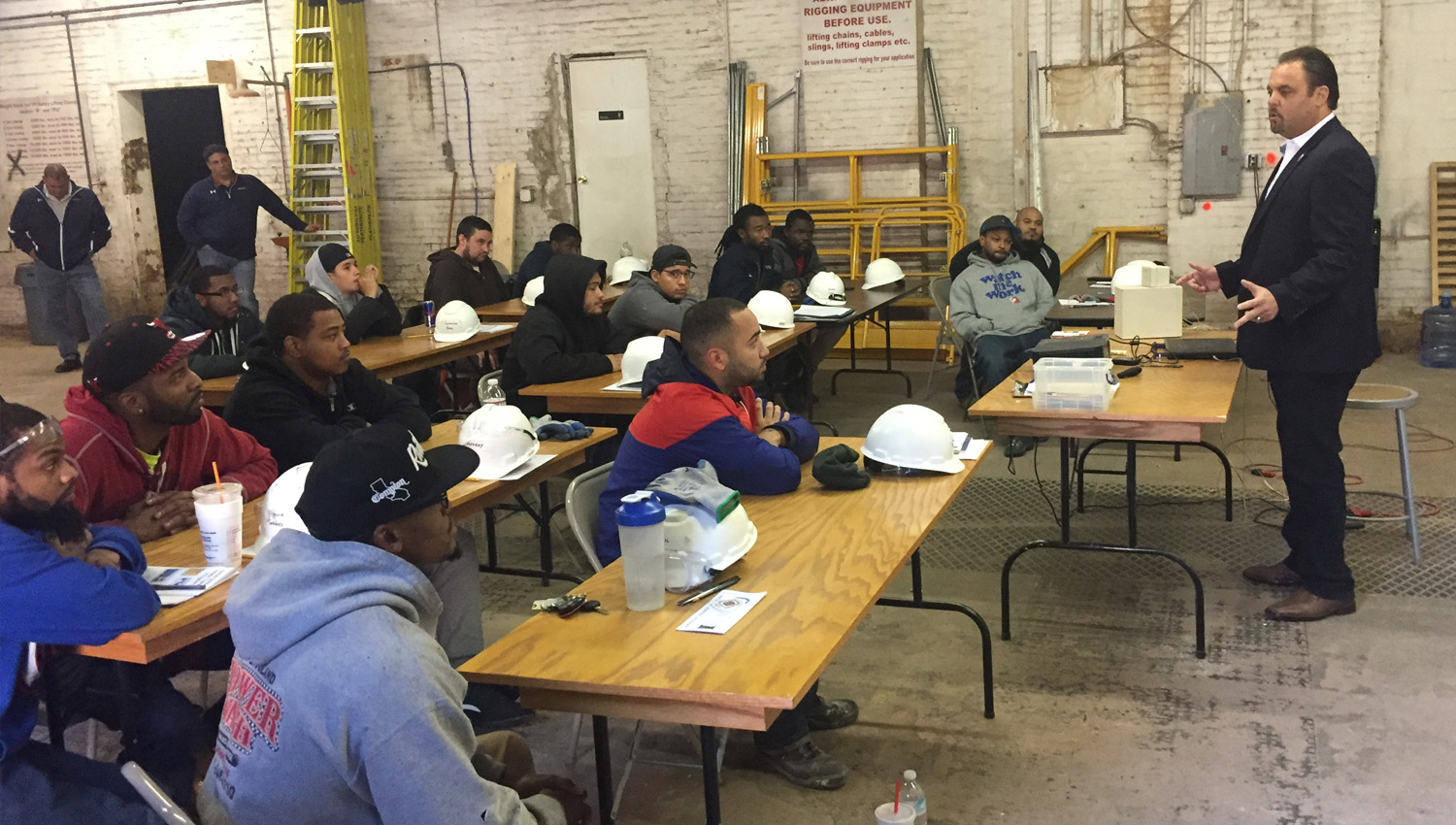A Labor-Management Partnership Building Trust and Good Jobs

BuildRI is a small but mighty labor-management partnership, comprised of representatives of major Rhode Island area contractors and Rhode Island area construction industry unions. BuildRI was originally launched as the Rhode Island 21st Century Labor Management Partnership in 2000, to promote the mutual interests of labor and management in the union construction industry, create good jobs that pay family-supporting wages and provide the skills needed for those jobs through apprenticeships and other training programs.
During a recent visit to Rhode Island, I had a chance to sit down and talk to Executive Director Greg Mancini. Here are some highlights from our conversation:
How did you become executive director for Build RI?

“I was recruited for the position of executive director primarily because I was not affiliated with labor or management. In retrospect, that was a sign of the original members’ initial trepidation about allowing a representative of one of their organizations to head up this new endeavor.”
What is one challenge that BuildRI was able to overcome?
“One of the primary objectives of BuildRI is to negotiate project labor agreements on major construction projects in Rhode Island. But in January 2002, the Rhode Island Supreme Court handed down a decision that made it more difficult to implement PLAs, including a requirement to complete a “reasoned study” to determine if a PLA would be feasible. At the time, I feared our organization would never get another public sector PLA, effectively eliminating the purpose of our entity in the public sector construction market.
However, our board did not waiver. They continued to meet monthly, and the more they met the more they started listening to one another. Mutual respect and trust started to develop and build between board members, and we also started to have more success in the marketplace.
I hoped that any public sector entity that would be open to implementing a PLA could be open to completing a “reasoned study,” so I lobbied a couple of these entities that I had a relationship with to undertake such an analysis — and ultimately one did. Then another and another to the point where local public agencies have conducted 38 such studies. In all 38, the independent analyses concluded that implementing a PLA on the targeted public sector projects helped ‘achieve the goals of the state purchases act’ and therefore PLAs have been implemented on approximately $2.8 billion in construction.
On a cumulative basis, our organization has entered into 87 union projects in the private and public sectors worth approximately $8.5 billion, and we have prospects for another $7 billion in the near future.”
What are some other accomplishments of this labor-management partnership?
“In 2021 we ran a campaign that resulted in the passage of seven bond questions worth $400 million in public investment, and in 2023 we ran another campaign that resulted in passage of $800 million in school construction projects in eight local municipalities. In total, we are 15 for 15 in advocating for passage of bond questions in elections we invest in. We also drafted or co-drafted 22 pieces of legislation that have passed into law while not having even one piece of anti-union construction legislation passed.”
What encouragement would you offer to others looking to build or sustain labor-management partnerships?
“We have learned over time that when one of our partners comes to the table with a problem, the other listens and solutions are discussed that are not self-serving but instead are focused on the greater good of the industry as a whole. Today, the relationships of our board members have developed to the point that most of our members are personal friends with one another. It is not uncommon to go to lunch with one another.
We recently celebrated our twentieth year as an organization. The reason why our organization has been around for 20 years and the reason why we are successful boils down to one reason: TRUST.”
The U.S. Department of Labor’s Labor-Management Partnership Program supports employers and workers in collaboratively addressing complex organizational issues. Learn more about how we can help workers and your organization thrive.
Darnice Marsh is the labor-management partnership coordinator in the Department of Labor’s Office of Labor-Management Standards.
Koebel.Tiffany…
Tue, 02/06/2024 – 16:37


Comments are closed.